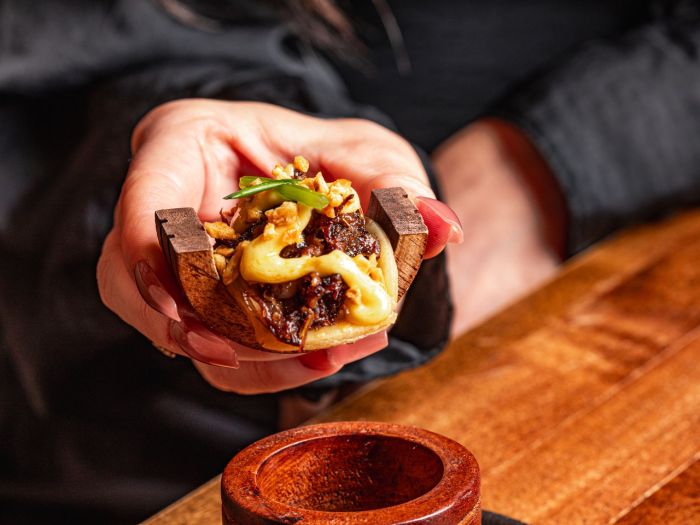Best time to visit Pakistan? It depends! From the vibrant colors of autumn foliage to the thrill of mountain trekking in spring, Pakistan’s diverse landscapes and rich culture offer something for every traveler, at the right time. This guide dives deep into seasonal variations, festivals, attractions, crowds, and more, helping you pinpoint the ideal period for your unforgettable Pakistani adventure.
This exploration covers everything from the bustling city life to the serene mountain vistas. We’ll examine seasonal weather patterns across various regions, highlight significant festivals, and consider the best times to visit specific attractions, balancing enjoyment with manageable crowds and affordability.
Seasonal Variations

Pakistan’s diverse landscapes and varied climates offer a unique experience for visitors throughout the year. Understanding the seasonal shifts in temperature and precipitation is crucial for planning the perfect trip. From the scorching summers of the plains to the crisp winters of the mountains, each season unveils a different facet of this captivating country.The climate in Pakistan varies significantly depending on the region and the time of year.
The country’s geography, ranging from the arid plains to the towering Himalayas, contributes to these variations. Knowing the average temperatures and precipitation patterns for different areas is essential for a comfortable and enjoyable travel experience.
Climate Breakdown by Month and Region
Understanding Pakistan’s climate across different regions and months is crucial for planning trips. The country’s geography, from the coastal areas to the mountainous north, plays a major role in the diverse weather patterns. This table provides a general overview, but it’s important to remember that these are averages, and local conditions can vary.
| Month | Region | Average Temperature (°C) | Precipitation (mm) | Typical Activities |
|---|---|---|---|---|
| March | Northern Mountains | 5-15 | Low | Trekking, Hiking, Exploring scenic valleys |
| March | Coastal Areas | 18-25 | Low | Beach visits, exploring coastal towns |
| March | Plains | 15-25 | Low | Exploring historical sites, cultural events |
| April | Northern Mountains | 10-20 | Low | Trekking, Hiking, Exploring scenic valleys |
| April | Coastal Areas | 20-28 | Low | Beach visits, exploring coastal towns, starting to get warm |
| April | Plains | 20-30 | Low | Exploring historical sites, cultural events, starting to get warm |
| May | Northern Mountains | 15-25 | Low | Trekking, Hiking, Exploring scenic valleys |
| May | Coastal Areas | 25-35 | Low | Beach visits, exploring coastal towns, hot |
| May | Plains | 25-40 | Low | Exploring historical sites, cultural events, very hot |
| June-September | Northern Mountains | 10-25 | High | Trekking, Hiking, exploring scenic valleys, cooler temperatures |
| June-September | Coastal Areas | 25-35 | High | Beach visits, exploring coastal towns, hot and humid |
| June-September | Plains | 30-45 | High | Exploring historical sites, cultural events, very hot and humid |
| October | Northern Mountains | 5-15 | Low | Trekking, Hiking, exploring scenic valleys, cooler temperatures |
| October | Coastal Areas | 20-28 | Low | Beach visits, exploring coastal towns, pleasant |
| October | Plains | 20-35 | Low | Exploring historical sites, cultural events, pleasant |
| November-February | Northern Mountains | 0-10 | Low | Skiing, snowboarding, exploring scenic valleys, snow-covered |
| November-February | Coastal Areas | 10-20 | Low | Beach visits, exploring coastal towns, mild temperatures |
| November-February | Plains | 10-25 | Low | Exploring historical sites, cultural events, pleasant |
Summer Season (May-June)
The summer months in Pakistan, particularly in the plains, bring scorching heat. Temperatures can soar to 40°C or higher, making outdoor activities challenging. Coastal areas experience similar heat, but with higher humidity. The northern mountains offer a welcome respite, with temperatures remaining more moderate. This season, particularly in the plains, isn’t ideal for extended outdoor explorations.
Monsoon Season (July-September)
The monsoon season brings heavy rainfall and significantly higher humidity, especially in the plains and coastal regions. The northern mountains also receive rain, but generally less intensely. While this season might not be ideal for everyone, the lush greenery and the refreshing showers make it a unique experience. It’s important to be prepared for heavy downpours and potential flooding, particularly in the plains and lower elevations.
Autumn Season (October-November)
Autumn in Pakistan marks a transition from the heat of summer to the cooler months. Temperatures are pleasant, and the skies are generally clear. The vibrant colors of the changing leaves and the cooler air make this a popular time for tourism in the northern mountains and valleys.
Winter Season (December-April)
The winter months offer a different experience, with significant temperature drops, particularly in the northern mountains. Snowfall is common in the higher elevations, creating stunning landscapes ideal for skiing, snowboarding, and trekking. Temperatures in the plains are more moderate, though the evenings can be quite cold.
Festivals and Events
Pakistan is a land of vibrant cultures and traditions, and its festivals reflect the rich tapestry of its diverse society. From the joyous celebrations of Eid to the spiritual fervour of Muharram, these events play a vital role in the country’s social fabric. Understanding these festivals allows travellers to experience a deeper connection with the local communities and to tailor their trips around the most culturally enriching periods.
Major Festivals and Their Significance
Pakistan’s calendar is filled with religious and cultural celebrations, each with its unique customs and traditions. These events often draw large crowds and influence tourist activity. The timing of these festivals can impact travel plans, as many people choose to attend or participate.
Planning a trip to Pakistan? Spring and autumn offer pleasant weather, perfect for exploring the stunning landscapes. While you’re dreaming of those vibrant landscapes, consider the fantastic free activities in Ho Chi Minh City, like wandering through the parks and admiring the local markets. Top free things to do in Ho Chi Minh City are a great way to experience the city without breaking the bank.
Ultimately, the best time to visit Pakistan is when you’re most excited to experience the unique culture and scenery!
Eid al-Fitr
Eid al-Fitr marks the end of Ramadan, the Islamic holy month of fasting. Families gather for prayers, feasts, and gift-giving. This festival usually lasts for a few days and is a time of great joy and celebration. Tourist activity tends to be higher as people travel to visit family and friends, creating a lively atmosphere in many cities.
Eid al-Adha
Eid al-Adha, the “Festival of Sacrifice,” commemorates the willingness of Prophet Ibrahim to sacrifice his son. It involves the sacrifice of an animal, followed by communal feasts and celebrations. The duration of Eid al-Adha is also a few days. The sheer number of people traveling to perform religious rituals and visit relatives makes this a prime time for travel enthusiasts.
Muharram
Muharram, the first month of the Islamic calendar, is a significant period of mourning for Shia Muslims, commemorating the martyrdom of Imam Hussain. The duration of the mourning period can vary. The deep spiritual significance of this event impacts tourist numbers, often leading to a quieter atmosphere in certain areas during the mourning period.
Diwali
Diwali, the festival of lights, is a major Hindu festival celebrated in parts of Pakistan, particularly in areas with significant Hindu populations. It typically lasts for several days, filled with the lighting of lamps, fireworks, and festive gatherings. Diwali can draw a modest number of tourists, particularly to the specific areas where Hindu communities reside.
Cultural Traditions Associated with Festivals
Each festival in Pakistan is deeply rooted in specific cultural traditions. These traditions vary from region to region, creating a diverse and colourful experience for visitors. For example, Eid al-Fitr celebrations often involve elaborate meals, traditional sweets, and the exchange of gifts. The mourning rituals during Muharram can include processions and speeches, reflecting the deep spiritual sentiments of the community.
List of Festivals with Details
| Festival | Dates (Approximate) | Location(s) | Description |
|---|---|---|---|
| Eid al-Fitr | Variable, following Ramadan | Nationwide | Celebrates the end of Ramadan with prayers, feasts, and gift-giving. |
| Eid al-Adha | Variable, based on the Islamic lunar calendar | Nationwide | Commemorates the willingness of Prophet Ibrahim to sacrifice his son with animal sacrifice, communal feasts, and celebrations. |
| Muharram | Variable, first month of the Islamic calendar | Nationwide, with concentration in Shia communities | A period of mourning for Shia Muslims, commemorating the martyrdom of Imam Hussain, often involving processions and speeches. |
| Diwali | Variable, typically October or November | Areas with significant Hindu populations | A Hindu festival of lights, characterized by the lighting of lamps, fireworks, and festive gatherings. |
Tourist Attractions and Activities
Pakistan boasts a diverse range of landscapes and historical sites, offering unique experiences throughout the year. The country’s varying climate and terrain significantly influence the best times to visit specific destinations and engage in particular activities. Understanding these seasonal nuances can help travelers optimize their journeys and maximize their enjoyment of the diverse offerings.
Impact of Seasons on Accessibility
The diverse geography of Pakistan leads to significant seasonal variations in accessibility. Mountain passes may be closed during winter due to heavy snowfall, affecting travel to high-altitude destinations. Conversely, summer monsoons can impact lower-lying areas, leading to flooding and road closures. Coastal regions, for example, might offer calm waters for swimming in the cooler months, while the summer brings strong winds and rough seas.
Recognizing these seasonal constraints is vital for planning a smooth and safe trip.
Activities by Season and Location
Different seasons unlock various opportunities for exploration and adventure.
Planning a trip to Pakistan? The best time to visit is generally during the spring or autumn months, when the weather is pleasant and the crowds are smaller. Thinking about incredible feats of human endurance, it’s inspiring to consider the incredible achievement of the oldest woman row ocean. This remarkable feat reminds us that incredible things are possible.
Ultimately, the best time to visit Pakistan depends on your personal preferences and interests. Perhaps you’ll find the ideal time for yourself!
- Spring (March-May): Ideal for trekking in the Himalayas. The weather is pleasant, with clear skies and moderate temperatures, allowing for comfortable ascents and breathtaking views. Valley flowers are in bloom, adding to the visual splendor. In the northern areas, this is the prime season for trekking and enjoying the stunning landscapes. Similarly, spring is a great time to visit the Swat Valley, known for its lush greenery and vibrant wildflowers.
- Summer (June-September): The best time to explore the coastal regions of Pakistan. The warm weather is ideal for swimming, sunbathing, and enjoying water sports. Beaches like those in Karachi and the Makran Coast are popular destinations for summer holidays. In the northern areas, this season often sees increased river rafting and kayaking opportunities. Keep in mind that summer also brings the possibility of heavy rainfall and localized flooding in some areas, particularly in the monsoon months (July-September).
- Autumn (October-December): This season is a great time to visit the scenic landscapes of Northern Pakistan, especially the valleys and mountains. The crisp air, vibrant foliage, and cooler temperatures make it perfect for hiking and exploring the countryside. Autumn also offers beautiful views of the changing colors in the forests. This season is a good time for exploring historical sites and cultural festivals in different parts of the country.
Planning a trip to Pakistan? The best time to visit is generally during the spring and fall months, when the weather is pleasant and crowds are smaller. Considering recent updates on us vaccinated travel to europe , it’s wise to check travel advisories before booking your trip, as the guidelines for international travel can shift.
Ultimately, the perfect time to experience Pakistan’s beauty depends on your personal preferences and travel style.
- Winter (January-February): While the winter months bring colder temperatures and potential snowfall in the mountains, this can be a rewarding time for skiing and snowboarding. Skating and snow activities are possible in the high-altitude areas. The weather can also be pleasant in some lower-lying areas, offering opportunities to visit historical sites and cultural attractions.
Best Times to Visit Popular Destinations
Considering crowds and weather conditions, certain destinations have ideal times to visit. Lahore, for example, is best visited during the spring or autumn seasons for pleasant temperatures and fewer crowds. The Swat Valley in summer is popular for its lush greenery, but it’s essential to check for monsoon warnings. The northern areas, such as Hunza and Gilgit-Baltistan, often experience their best weather during spring.
Comparative Table of Attractions and Seasons
| Attraction | Spring | Summer | Autumn | Winter |
|---|---|---|---|---|
| Himalayan Trekking | Excellent | Good, but watch for monsoons | Good | Limited due to snow |
| Coastal Beaches | Pleasant | Ideal | Pleasant | Cool |
| Swat Valley | Excellent | Excellent, but watch for monsoons | Excellent | Pleasant |
| Lahore | Good | Moderate | Good | Moderate |
| Skating/Snow Activities | Moderate | None | None | Excellent |
Crowds and Bookings
Pakistan offers a diverse tapestry of experiences, from bustling cityscapes to serene mountain valleys. Understanding the ebb and flow of tourist volume is crucial for planning a trip that balances enjoyment with manageable crowds. Knowing when to book and how to compare prices can significantly impact your travel budget and overall experience.
Tourist Volume Throughout the Year
The tourist volume in Pakistan fluctuates significantly throughout the year, mirroring the seasonal variations in weather and popular attractions. Peak season typically falls during the spring and winter months, when the weather is pleasant and many festivals and events are held. Conversely, the summer months often see a decline in tourist numbers due to the intense heat. The shoulder seasons, spring and autumn, often present a good balance between pleasant weather and fewer crowds.
This is especially true for specific destinations, so it is worthwhile to research the typical patterns for your chosen location.
Accommodation and Transportation Costs
Accommodation and transportation costs vary significantly depending on the season. Peak season typically sees a surge in prices for both hotels and flights, as demand outstrips supply. Off-peak seasons, on the other hand, offer more affordable options. This is a predictable pattern in many tourist destinations. For example, a hotel room in a popular resort town might cost twice as much during the summer holidays compared to the off-season.
Similarly, airfare and transportation costs often follow a similar trend.
Booking Process and Strategies for Affordable Travel
Booking accommodations and flights in advance is crucial for securing the best deals and avoiding last-minute price hikes. Utilizing travel comparison websites and apps allows you to quickly compare prices and availability for flights and hotels across different months. Booking well in advance, often several months ahead, can often save you a considerable amount of money, especially during peak seasons.
Consider traveling during the shoulder seasons to experience the best of the weather and fewer crowds.
Comparing Prices and Availability for Flights and Hotels
Comparing prices and availability for flights and hotels in different months is essential for finding affordable travel options. Many travel websites and apps allow you to filter results by date range, enabling you to quickly see how prices fluctuate. Using tools that allow you to track prices over time can be extremely useful. For example, if you are planning a trip to the northern areas of Pakistan during the summer months, you may find that prices for flights and hotels are significantly higher than during the shoulder seasons.
By carefully comparing options, you can often find flights and hotels that are significantly cheaper, even in peak season, through various websites and applications.
Local Customs and Traditions
Pakistan’s rich tapestry of culture is woven from diverse traditions, reflecting its history and unique regional variations. Understanding these customs is key to a respectful and enriching travel experience. From the vibrant festivals to the everyday interactions, Pakistan’s people are warm and welcoming, and respecting their traditions allows for deeper connections with the local communities.The significance of local customs and traditions is not limited to specific seasons, but rather permeates daily life, influencing everything from greetings to celebrations.
Understanding these nuances allows visitors to navigate social situations with grace and respect, while enriching their appreciation of the local culture. Cultural sensitivity is paramount to a positive travel experience, allowing for mutual respect and understanding between visitors and locals.
Seasonal Significance of Customs, Best time to visit pakistan
Various customs and traditions are deeply intertwined with the changing seasons. For example, the harvest season brings unique celebrations and rituals, often incorporating prayers for abundance and gratitude. These seasonal celebrations are an integral part of the cultural calendar, reflecting the close connection between people and the natural world.
Cultural Sensitivities and Etiquette
Pakistan is a predominantly Muslim country, and it is important for visitors to be mindful of religious sensitivities. Dress modestly, especially when visiting religious sites. Refrain from discussing sensitive topics such as politics or religion, unless you are engaging with knowledgeable locals who can discuss them in a respectful manner. Building rapport with locals often involves exchanging pleasantries and showing genuine interest in their culture.
Respecting local customs is crucial to creating a positive and mutually enriching experience.
Recommendations for Integrating into Local Customs
Learning a few basic greetings and phrases in Urdu can go a long way in showing respect and appreciation. Engage in conversations with locals, asking questions about their traditions and customs. Participate in local events and festivals, respecting any specific rules or guidelines. Observing local customs, while also respecting personal space and boundaries, creates opportunities for genuine connection and understanding.
This approach will be reciprocated with genuine hospitality and respect.
How Cultural Events Influence the Best Time to Visit
Major cultural events, such as religious festivals or local celebrations, often attract large crowds. Understanding the timing of these events can help you decide the best time to visit. Consider the potential for increased costs of accommodation and transportation during these peak periods. Furthermore, the atmosphere during such events is typically vibrant and engaging, adding a unique dimension to your travel experience.
For example, the Eid celebrations offer a unique cultural immersion experience, but the increased crowds may make it less suitable for travelers seeking a more tranquil experience.
Environmental Considerations
Pakistan’s diverse landscapes and vibrant culture attract millions of tourists annually. However, understanding the impact of weather patterns and preparing for varying conditions is crucial for a safe and enjoyable trip. Different regions and seasons present unique challenges and opportunities for outdoor adventures.Weather patterns significantly influence outdoor activities in Pakistan. From the scorching heat of the Thar Desert to the snow-capped peaks of the Himalayas, the country experiences a wide range of climates.
Understanding these patterns is essential for planning activities and ensuring a comfortable and safe journey.
Impact of Weather Patterns on Outdoor Activities
Pakistan’s weather patterns are highly variable across different regions and times of the year. The Himalayas, for example, experience significant snowfall during winter, impacting mountaineering and trekking activities. Conversely, the scorching heat of the Thar Desert in summer limits outdoor activities during the hottest part of the day. The monsoon season brings heavy rainfall, affecting road conditions and potentially causing flash floods.
Ideal Times to Visit for Specific Outdoor Activities
The best time to visit for specific outdoor activities depends on the region and the desired experience. For trekking and mountaineering in the Himalayas, spring and autumn are generally ideal, offering pleasant temperatures and clear skies. Summer might be too hot and humid, while winter often brings heavy snowfall. The Thar Desert, on the other hand, is best explored during the cooler winter months, when the temperatures are more manageable.
Wildlife viewing is often best during the cooler months, when animals are more active and easier to spot.
Preparing for Different Weather Conditions
Packing appropriate clothing and gear is crucial for adapting to various weather conditions. Layering clothing is essential to handle temperature fluctuations, particularly in mountainous regions. Rain gear is necessary during the monsoon season, and sturdy footwear is vital for trekking and hiking. In the summer months, sunscreen, hats, and sunglasses are essential to protect against the strong sun.
Environmental Factors Influencing Tourism
| Factor | Impact on Tourism | Mitigation Strategies |
|---|---|---|
| Weather (Temperature, Rainfall, Snowfall) | Impacts outdoor activities, limits accessibility, and affects comfort levels. | Thorough research, appropriate clothing, and flexible itinerary planning. |
| Safety (Road Conditions, Wildlife Encounters) | Potential for accidents, injuries, and encounters with dangerous wildlife. | Following safety guidelines, using reputable guides, and carrying necessary supplies. |
| Natural Disasters (Floods, Earthquakes, Landslides) | Significant disruption to travel plans and potential for severe damage. | Staying updated on weather forecasts and disaster warnings, and having contingency plans. |
“Careful planning and preparedness are key to a successful and safe trip to Pakistan, considering the diverse and potentially challenging weather conditions.”
Practical Tips for Planning

Planning a trip to Pakistan requires careful consideration of various factors, from the best time to visit for your interests to adapting to weather and local events. This section provides practical advice to ensure a smooth and enjoyable journey, taking into account the diverse landscapes and cultural experiences Pakistan offers.Effective planning involves understanding the nuances of Pakistan’s seasons, festivals, and local customs to make the most of your trip.
This includes researching accommodation options, transportation, and activities to match your budget and interests. Adapting to potential weather variations and local events is also crucial for a seamless experience.
Choosing the Best Time to Visit Based on Interests
Understanding Pakistan’s diverse climate and seasonal events helps tailor your trip to specific interests. Adventure enthusiasts, for example, might find the spring and autumn months ideal for trekking in the Himalayas or exploring the northern areas. Summer offers opportunities for water sports and exploring the coastal regions, while winter can be great for skiing and snowboarding in the higher altitudes.
For those interested in cultural experiences, attending local festivals and events during their respective seasons is essential.
Adapting Travel Plans Based on Weather Forecasts and Local Events
Pakistan’s weather can fluctuate significantly throughout the year, and staying informed about potential changes is vital. Weather forecasts, especially for mountainous regions, should be checked regularly. Similarly, local events and festivals can impact travel plans, so research the dates and locations of significant celebrations in advance. For example, the annual Swat Valley Festival, celebrated in spring, might require adjusting your itinerary to experience the festivities.
Researching and Choosing Accommodation
Finding suitable accommodation is a crucial part of the planning process. Pakistan offers a wide range of options, from budget-friendly guesthouses to luxurious hotels. Online travel platforms provide extensive details on different accommodation types. Consider factors such as location, amenities, and reviews when making your selection. For example, if you’re interested in a more immersive cultural experience, staying in a locally owned guesthouse could offer a more authentic experience.
Planning Checklist for a Trip to Pakistan
A well-organized checklist can significantly streamline your trip planning. Consider creating a checklist incorporating seasonal variations. This ensures you have all the necessary information and documents. Here’s a sample checklist:
- Visa Requirements: Verify visa requirements for your nationality and plan the application process well in advance.
- Travel Insurance: Purchase comprehensive travel insurance covering medical emergencies, lost belongings, and trip cancellations.
- Vaccinations and Health Precautions: Consult your doctor about necessary vaccinations and health precautions specific to Pakistan, especially considering the varied regions you plan to visit.
- Currency Exchange: Exchange currency before traveling or use ATMs.
- Accommodation Bookings: Secure accommodations for your stay, considering the duration and your preferred style of accommodation.
- Transportation Arrangements: Plan transportation between destinations, including local buses, trains, or taxis, and book in advance if needed.
- Packing List: Create a packing list considering the expected weather conditions and activities during your trip. For example, pack layers for varying temperatures in mountainous regions.
- Emergency Contacts: Keep a list of emergency contacts and important phone numbers readily available.
- Local Customs and Etiquette: Research local customs and etiquette to show respect during your stay.
Conclusive Thoughts: Best Time To Visit Pakistan
In conclusion, the best time to visit Pakistan isn’t a single answer, but a personalized choice based on your interests and priorities. Whether you crave adventure, cultural immersion, or simply stunning scenery, this guide equips you with the knowledge to plan a trip tailored to your perfect Pakistan experience. Consider the weather, festivals, and crowds to find your ideal window for exploring this captivating country.
Happy travels!




